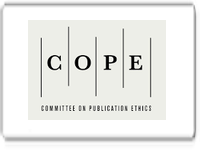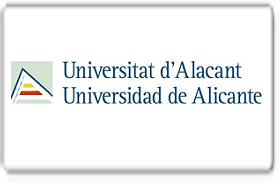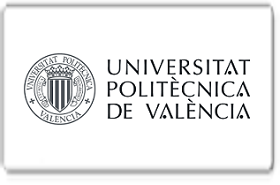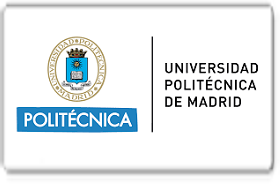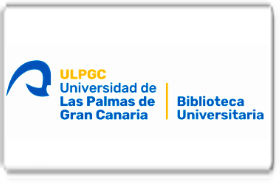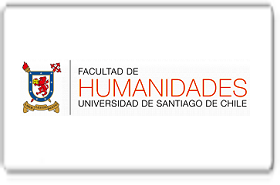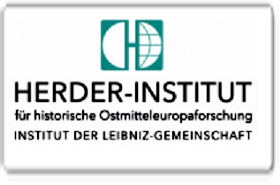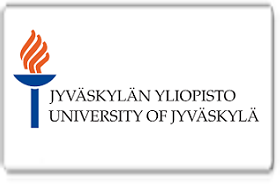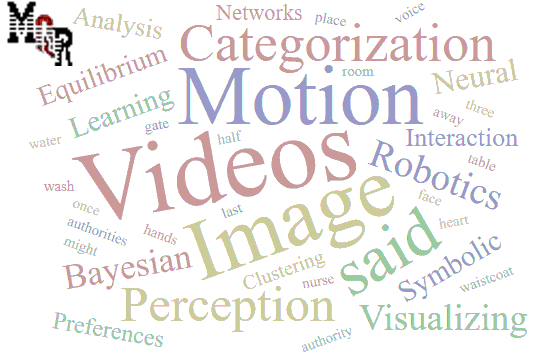Desarrollo y evaluación de mascarillas de oxigenación en 3D diseñadas para caninos en recuperación post quirúrgica
DOI:
https://doi.org/10.56048/MQR20225.8.1.2024.3814-3839Palabras clave:
Mascarillas de oxigenación 3D; Caninos; Post-quirúrgicoResumen
En la medicina veterinaria, el desarrollo de mascarillas de oxigenación en 3D para caninos en recuperación postquirúrgica representa un avance significativo, pues proporcionan un soporte respiratorio óptimo y mejoran el confort del paciente durante el proceso de recuperación. El objetivo principal de esta investigación fue diseñar, desarrollar y evaluar mascarillas de oxigenación en 3D diseñadas para caninos en recuperación postquirúrgica. La metodología utilizada fue carácter experimental y transversal, con un enfoque cuantitativo, un alcance correlacional y un tipo de estudio analítico; para su efecto se utilizó una impresora 3D con resina líquida para elaborar las mascarillas, basadas en especificaciones anatómicas caninas y se probó su eficacia en 30 pacientes caninos sometidos a cirugía de ovariohisterectomía (OVH). El estudio demostró que las mascarillas proporcionan un soporte respiratorio efectivo y mejoran significativamente el confort de los caninos en recuperación postquirúrgica. Se observó una mejora notable en la recuperación anestésica y una adecuada oxigenación tisular en los pacientes que utilizaron la mascarilla. Además, se destacaron los beneficios en la estabilidad cardiaca y la mejora en la saturación de oxígeno de dichos pacientes, demostrando su eficacia e importancia para administrar una adecuada oxigenación en pacientes caninos que serán sometidos a un procedimiento quirúrgico.
Descargas
Métricas
Cited
DOI: 10.56048![]()
Citas
Ambrisko, T. D., Schramel, J. P., Auer, U., & Moens, Y. P. S. (2017). Impact of four different recumbencies on the distribution of ventilation in conscious or anaesthetized spontaneously breathing beagle dogs: An electrical impedance tomography study. PLoS ONE, 12(9). Scopus. https://doi.org/10.1371/journal.pone.0183340
Ambros, B., Carrozzo, M. V., & Jones, T. (2018). Desaturation times between dogs preoxygenated via face mask or flow-by technique before induction of anesthesia. Veterinary Anaesthesia and Analgesia, 45(4), 452-458. https://doi.org/10.1016/j.vaa.2018.03.004
Ambrósio, A. M., Sanchez, A. F., Pereira, M. A. A., Andrade, F. S. R. M. D., Rodrigues, R. R., Vitorasso, R. D. L., Moriya, H. T., & Fantoni, D. T. (2022). Assessment of Regional Ventilation During Recruitment Maneuver by Electrical Impedance Tomography in Dogs. Frontiers in Veterinary Science, 8. Scopus. https://doi.org/10.3389/fvets.2021.815048
Araos, J., Sedgwick, S., Staffieri, F., Donati, P., & Martin-Flores, M. (2022). Lung aeration and volumes following alveolar recruitment maneuvers with three airway pressures in healthy anesthetized and mechanically ventilated Beagle dogs. Veterinary Anaesthesia and Analgesia, 49(5), 443-451. Scopus. https://doi.org/10.1016/j.vaa.2022.06.005
Bajon, F., & Gauthier, V. (2023). Management of refractory hypoxemia using recruitment maneuvers and rescue therapies: A comprehensive review. Frontiers in Veterinary Science, 10. Scopus. https://doi.org/10.3389/fvets.2023.1157026
Bellini, L., & De Benedictis, G. M. (2023). Oxygen Reserve Index as a Tool to Monitor Four Techniques of Oxygen Supplementation at Different Flow Rates in Dogs Sedated with Dexmedetomidine and an Opioid. ANIMALS, 13(19), 3077. https://doi.org/10.3390/ani13193077
Bellini, L., & Giulia, M. D. (2023). Oxygen Reserve Index as a Tool to Monitor Four Techniques of Oxygen Supplementation at Different Flow Rates in Dogs Sedated with Dexmedetomidine and an Opioid. Animals, 13(19), 13-20. doi:https://doi.org/10.3390/ani13193077
Bellini, L., Schrank, M., Contiero, I. A. V., & Mollo, A. (2023). Retrospective comparison of the effects of laryngeal mask and endotracheal tube on some cardio-respiratory variables in pet rabbits undergoing anaesthesia for elective gonadectomy. Acta Veterinaria Scandinavica, 65, 1-8. https://doi.org/10.1186/s13028-023-00673-2
Capó, X., Monserrat-Mesquida, M., Quetglas-Llabrés, M., Batle, J. M., Tur, J. A., Pons, A., Sureda, A., & Tejada, S. (2023). Hyperbaric Oxygen Therapy Reduces Oxidative Stress and Inflammation, and Increases Growth Factors Favouring the Healing Process of Diabetic Wounds. International Journal of Molecular Sciences, 24(8). Scopus. https://doi.org/10.3390/ijms24087040
Creedon, J. M. B., & Davis, H. (2023). Advanced Monitoring and Procedures for Small Animal Emergency and Critical Care. John Wiley & Sons.
DNA plays part in dog breathing issue. (2019). The Herald. https://www.proquest.com/docview/2226310307/citation/1C0F9525C5094318PQ/8
Ekenstedt, K. J., Crosse, K. R., & Risselada, M. (2020). Canine Brachycephaly: Anatomy, Pathology, Genetics and Welfare. Journal of Comparative Pathology, 176, 109-115. Scopus. https://doi.org/10.1016/j.jcpa.2020.02.008
Fan, Z., Bian, Z., Huang, H., Liu, T., Ren, R., Chen, X., Zhang, X., Wang, Y., Deng, B., & Zhang, L. (2023). Dietary Strategies for Relieving Stress in Pet Dogs and Cats. Antioxidants, 12(3). Scopus. https://doi.org/10.3390/antiox12030545
Farrell, K. (2023). Oxygen Therapy. En Advanced Monitoring and Procedures for Small Animal Emergency and Critical Care: Second Edition (pp. 311-326). Scopus. https://doi.org/10.1002/9781119581154.ch24
Fontaine, C., Jacq, G., Perier, F., Holleville, M., & Legriel, S. (2020). The role of secondary brain insults in status epilepticus: A systematic review. Journal of Clinical Medicine, 9(8), 1-12. Scopus. https://doi.org/10.3390/jcm9082521
Frischer, R., Daly, J., Haggerty, J., & Guenther, C. (2022). High-flow nasal cannula improves hypoxemia in dogs failing conventional oxygen therapy. J Am Vet Med Assoc, 1(2), 210-216. doi:10.2460/javma.22.09.0400
García-Sanz, V., Aguado, D., Gómez de Segura, I. A., & Canfrán, S. (2021). Individualized positive end-expiratory pressure following alveolar recruitment manoeuvres in lung-healthy anaesthetized dogs: A randomized clinical trial on early postoperative arterial oxygenation. Veterinary Anaesthesia and Analgesia, 48(6), 841-853. Scopus. https://doi.org/10.1016/j.vaa.2021.03.019
García-Sanz, V., Canfrán, S., Gómez de Segura, I. A., & Aguado, D. (2020). Effect of recumbency and body condition score on open-lung positive end-expiratory pressure and respiratory system compliance following a stepwise lung recruitment manoeuvre in healthy dogs during general anaesthesia. Research in Veterinary Science, 132, 177-185. Scopus. https://doi.org/10.1016/j.rvsc.2020.06.016
Gilday, C., Odunayo, A., & Hespel, A.-M. (2021). Spontaneous Pneumothorax: Pathophysiology, Clinical Presentation and Diagnosis. Topics in Companion Animal Medicine, 45. Scopus. https://doi.org/10.1016/j.tcam.2021.100563
Grosso, G., Vezzosi, T., Briganti, A., Di Franco, C., Tognetti, R., & Mortola, J. P. (2021). Breath-by-breath analysis of respiratory sinus arrhythmia in dogs. Respiratory Physiology and Neurobiology, 294. Scopus. https://doi.org/10.1016/j.resp.2021.103776
Hopper, K., Rezende, M. L., Borchers, A., & Epstein, S. E. (2018). Efficacy of Manual Ventilation Techniques During Cardiopulmonary Resuscitation in Dogs. Frontiers in Veterinary Science, 5. https://www.frontiersin.org/articles/10.3389/fvets.2018.00239
Itami, T., Hanazono, K., Oyama, N., Sano, T., Makita, K., & Yamashita, K. (2019). Cardiovascular effects of intravenous colforsin in normal and acute respiratory acidosis canine models: A dose-response study. PLoS ONE, 14(7). Scopus. https://doi.org/10.1371/journal.pone.0213414
Jagodich, T. A., Bersenas, A. M. E., Bateman, S. W., & Kerr, C. L. (2019). Comparison of high flow nasal cannula oxygen administration to traditional nasal cannula oxygen therapy in healthy dogs. Journal of Veterinary Emergency and Critical Care, 29(3), 246-255. https://doi.org/10.1111/vec.12817
Jagodich, T. A., Bersenas, A. M., Bateman, S. W., & Kerr, C. L. (2020). High-flow nasal cannula oxygen therapy in acute hypoxemic respiratory failure in 22 dogs requiring oxygen support escalation. J Vet Emerg Crit Care, 30(4), 364-375. doi:10.1111/vec.12970
Jagodich, T. A., Bersenas, A., Bateman, S., & Kerr, C. (2020). High-flow nasal cannula oxygen therapy in acute hypoxemic respiratory failure in 22 dogs requiring oxygen support escalation. Journal of Veterinary Emergency and Critical Care(30), 349-503. Obtenido de https://onlinelibrary.wiley.com/doi/epdf/10.1111/vec.12970
Ji, M., Ikegami, T., Debru, E., & Easton, P. A. (2022). Parasternal intercostal function during sustained hypoxia. Journal of Applied Physiology, 132(3), 622-631. Scopus. https://doi.org/10.1152/japplphysiol.00771.2020
Jones, S. M., Burns, C. C., Reed, R. A., Quandt, J. E., Barletta, M., & Sakai, D. M. (2023). The effect of adding a heated humidified breathing circuit on body temperature in healthy anesthetized dogs. Journal of the American Veterinary Medical Association, 261(8), 1181-1185. Scopus. https://doi.org/10.2460/javma.23.01.0040
Katayama, P. L. (2023). CO2/H+ detection in the body: A shared responsibility. Journal of Physiology. Scopus. https://doi.org/10.1113/JP285738
Keir, I., Daly, J., Haggerty, J., & Guenther, C. (2016). Retrospective evaluation of the effect of high flow oxygen therapy delivered by nasal cannula on PaO2 in dogs with moderate-to-severe hypoxemia. J Vet Emerg Crit Care, 26(4), 598-602. Obtenido de 10.1111/vec.12495
Kovak, N., DeRosa, S., Fischer, C., Murphy, K., & Wolf, J. (2022). Inclusion of airway pressure release ventilation in the management of respiratory failure and refractory hypercapnia in a dog. JOURNAL OF VETERINARY EMERGENCY AND CRITICAL CARE, 32(6), 817-823. https://doi.org/10.1111/vec.13231
Krawec, P., Marshall, K., & Odunayo, A. (2022). A Review of High Flow Nasal Cannula Oxygen Therapy in Human and Veterinary Medicine. Topics in Companion Animal Medicine, 46. Scopus. https://doi.org/10.1016/j.tcam.2021.100596
Krohn, F., Novello, M., van der Giessen, R. S., De Zeeuw, C. I., Pel, J. J. M., & Bosman, L. W. J. (2023). The integrated brain network that controls respiration. eLife, 12. Scopus. https://doi.org/10.7554/elife.83654
Lee, G.-H., Jo, W., Kang, T.-K., Oh, T., & Kim, K. (2023). Assessment of Stress Caused by Environmental Changes for Improving the Welfare of Laboratory Beagle Dogs. Animals, 13(6). Scopus. https://doi.org/10.3390/ani13061095
Martin-Flores, M., Araos, J. D., Daniels, Z. S., Newman, A., Nugen, S. A., & Campoy, L. (2022). Effects of intraoperative positive end-expiratory pressure and fraction of inspired oxygen on postoperative oxygenation in dogs undergoing stifle surgery. Veterinary Anaesthesia and Analgesia, 49(3), 275-281. Scopus. https://doi.org/10.1016/j.vaa.2022.02.002
Martin-Flores, M., Cannarozzo, C. J., Tseng, C. T., Lorenzutti, A. M., Araos, J. D., Harvey, H. J., Gleed, R. D., & Campoy, L. (2020). Postoperative oxygenation in healthy dogs following mechanical ventilation with fractions of inspired oxygen of 0.4 or >0.9. Veterinary Anaesthesia and Analgesia, 47(3), 295-300. Scopus. https://doi.org/10.1016/j.vaa.2020.01.002
Martin-Flores, M., Tseng, C. T., Robillard, S. D., Abrams, B. E., Campoy, L., Harvey, H. J., & Gleed, R. D. (2018). Effects of two fractions of inspired oxygen during anesthesia on early postanesthesia oxygenation in healthy dogs. American Journal of Veterinary Research, 79(2), 147-153. Scopus. https://doi.org/10.2460/ajvr.79.2.147
Niinikoski, I., Himanen, S.-L., Tenhunen, M., Lilja-Maula, L., & Rajamäki, M. M. (2023). Description of a novel method for detection of sleep-disordered breathing in brachycephalic dogs. Journal of Veterinary Internal Medicine, 37(4), 1475-1481. Scopus. https://doi.org/10.1111/jvim.16783
O’Keeffe, T., & Donaldson, R. E. (2023). Mechanical ventilation in dogs and cats with tick paralysis. Frontiers in Veterinary Science, 10. Scopus. https://doi.org/10.3389/fvets.2023.1071191
Parke, R. L., McGuinness, S., & Eccleston, M. (2011). A preliminary randomized controlled trial to assess effectiveness of nasal high-flow oxygen in intensive care patients. Respiratory Care, 56(3), 265-270. doi:10.4187/respcare.00801
Pouzot-Nevoret, C., Hocine, L., Nègre, J., Goy-Thollot, I., Barthélemy, A., Boselli, E., Bonnet, J. M., & Allaouchiche, B. (2019). Prospective pilot study for evaluation of high-flow oxygen therapy in dyspnoeic dogs: The HOT-DOG study. Journal of Small Animal Practice, 60(11), 656-662. https://doi.org/10.1111/jsap.13058
Ramesh, M., Thomovsky, E., & Johnson, P. (2021). Conventional versus high-flow oxygen therapy in dogs with lower airway injury. Canadian Journal of Veterinary Research, 85(4), 241-250. Scopus.
Ramsook, A. H., Dominelli, P. B., Angus, S. A., Senefeld, J. W., Wiggins, C. C., & Joyner, M. J. (2023). The oxygen transport cascade and exercise: Lessons from comparative physiology. Comparative Biochemistry and Physiology -Part A : Molecular and Integrative Physiology, 282. Scopus. https://doi.org/10.1016/j.cbpa.2023.111442
Rodríguez Sosa, V. M. (2008). El bienestar animal en cirugía. REDVET. Revista Electrónica de Veterinaria, 9(10), 1-3. Obtenido de chrome-extension://efaidnbmnnnibpcajpcglclefindmkaj/https://www.redalyc.org/pdf/636/63617098013.pdf
Romanchuk, O. (2023). Cardiorespiratory dynamics during respiratory maneuver in athletes. Frontiers in Network Physiology, 3. Scopus. https://doi.org/10.3389/fnetp.2023.1276899
Ronagh, A., Sabiza, S., Naddaf, H., Avizeh, R., & Yazdaninia, S. (2020). Comparison of sedative and some cardiopulmonary effects of intramuscular medetomidine or medetomidine–tramadol in dogs. Veterinary Anaesthesia and Analgesia, 47(3), 381-384. Scopus. https://doi.org/10.1016/j.vaa.2020.02.004
Rondelli, V., Guarracino, A., Iacobellis, P., Grasso, S., Stripoli, T., Lacitignola, L., Auriemma, E., Romano, F., Araos, J. D., & Staffieri, F. (2020). Evaluation of the effects of helmet continuous positive airway pressure on laryngeal size in dogs anesthetized with propofol and fentanyl using computed tomography. Journal of Veterinary Emergency and Critical Care, 30(5), 543-549. Scopus. https://doi.org/10.1111/vec.12977
Salcedo J, J., Uribe Rendón, A., Alzate Velásquez, D., Vergara Saldarriaga, L. A., & Correa-Valencia, N. M. (2019). High-flow post-surgical oxygen therapy applied through bilateral nasal cannula in two canines undergoing thoracic procedures: a case report. Rev. CES Med, 14(3), 123-134. doi:10.21615/cesmvz.14.3.10
Salcedo, J., Rendón, A., Velásquez, D., Vergara, L., & Correa, N. (2019). Oxigenoterapia posquirúrgica de alto flujo aplicada mediante cánula nasal bilateral en dos caninos sometidos a procedimientos de tórax: un reporte de caso. CES Medicina Veterinaria y Zootecnia, 14, 123-134. doi:10.21615/cesmvz.14.3.10
Scardia, A., nueva, E. a sitio externo E. enlace se abrirá en una ventana, Laricchiuta, P., nueva, E. a sitio externo E. enlace se abrirá en una ventana, Stabile, M., nueva, E. a sitio externo E. enlace se abrirá en una ventana, Acquafredda, C., Lacitignola, L., nueva, E. a sitio externo E. enlace se abrirá en una ventana, Uva, A., Crovace, A., nueva, E. a sitio externo E. enlace se abrirá en una ventana, Staffieri, F., & nueva, E. a sitio externo E. enlace se abrirá en una ventana. (2023). Use of Laryngeal Mask and Anesthetic Management in Hamadryas Baboons (Papio hamadryas) Undergoing Laparoscopic Salpingectomy—A Case Series. Veterinary Sciences, 10(2). https://doi.org/10.3390/vetsci10020158
Stabile, M., Lacitignola, L., Piemontese, M. R., Di Bella, C., Acquafredda, C., Grasso, S., Crovace, A. M., Gomez de Segura, I. A., & Staffieri, F. (2021). Comparison of CPAP and oxygen therapy for treatment of postoperative hypoxaemia in dogs. Journal of Small Animal Practice, 62(5), 351-358. https://doi.org/10.1111/jsap.13295
Tagliabue, G., Ji, M., Suneby Jagers, J. V., Zuege, D. J., Kieser, T. M., & Easton, P. A. (2022). Expiratory and inspiratory action of transversus abdominis during eupnea and hypercapnic ventilation. Respiratory Physiology and Neurobiology, 306. Scopus. https://doi.org/10.1016/j.resp.2022.103951
Tang, H.-M., Laduke, C., Reynolds, D., Carey, C., Hahn, S., & Friedrichs, G. S. (2020). Respiratory Rates Derived From Arterial Blood Pressure Waveforms in Telemetered Dogs. International Journal of Toxicology, 39(6), 542-546. Scopus. https://doi.org/10.1177/1091581820946703
Teppo, A.-M., Rossi, H., Rajamäki, M. M., & Hyytiäinen, H. K. (2023). Proposed protocol for utilising high-flow nasal oxygen therapy in treatment of dogs hospitalised due to pneumonia. BMC Veterinary Research, 19(1). Scopus. https://doi.org/10.1186/s12917-023-03737-7
Tiruvoipati, R., Lewis, D., Haji, K., & Botha, J. (2010). High-flow nasal oxygen vs high-flow face mask: A randomized crossover trial in extubated patients. Journal of Critical Care, 25(3), 463-468. doi:https://doi.org/10.1016/j.jcrc.2009.06.050.
Wanzala, J. N., Atim, M. R., & Obungoloch, J. (2023). Design of Fuzzy Logic-Based ARDS Berlin Definition for Ventilator Adjustments to Ensure Lung Protection. International Journal of Fuzzy Systems, 25(5), 1935-1951. Scopus. https://doi.org/10.1007/s40815-023-01489-y
Whitney, J., & Keir, I. (2023). Clinical review of high-flow nasal oxygen therapy in human and veterinary patients. Frontiers in Veterinary Science, 10. Scopus. https://doi.org/10.3389/fvets.2023.1070881
Wong, A., Uquillas, E., Hall, E., Dart, C., & Dart, A. (2019). Comparison of the effect of oxygen supplementation using flow-by or a face mask on the partial pressure of arterial oxygen in sedated dogs. New Zealand Veterinary Journal, 67(1), 36-39. https://doi.org/10.1080/00480169.2018.1528903
Xi, J., Si, X. A., & Malvè, M. (2023). Nasal anatomy and sniffing in respiration and olfaction of wild and domestic animals. Frontiers in Veterinary Science, 10. Scopus. https://doi.org/10.3389/fvets.2023.1172140
Yang, R., Zhou, L., Chen, Z., He, S., Lian, S., Shen, Y., & Zhang, X. (2023). Effect and mechanical mechanism of spontaneous breathing on oxygenation and lung injury in mild or moderate animal ARDS. BMC Pulmonary Medicine, 23, 1-9. https://doi.org/10.1186/s12890-023-02730-y
Ynajara, E. (30 de 10 de 2016). Oxigenoterapia en animales de compania. Issuu, 8.
Zersen, K. M. (2023). Setting the optimal positive end-expiratory pressure: A narrative review. Frontiers in Veterinary Science, 10. Scopus. https://doi.org/10.3389/fvets.2023.1083290
Zhou, L., Yang, R., Xue, C., Chen, Z., Jiang, W., He, S., & Zhang, X. (2022). Biphasic positive airway pressure spontaneous breathing attenuates lung injury in an animal model of severe acute respiratory distress syndrome. BMC Anesthesiology, 22(1). Scopus. https://doi.org/10.1186/s12871-022-01763-w
Publicado
Cómo citar
Número
Sección
Licencia

Esta obra está bajo una licencia internacional Creative Commons Atribución 4.0.
Los autores se comprometen a respetar la información académica de otros autores, y a ceder los derechos de autor a la Revista MQRInvestigar, para que el artículo pueda ser editado, publicado y distribuido. El contenido de los artículos científicos y de las publicaciones que aparecen en la revista es responsabilidad exclusiva de sus autores. La distribución de los artículos publicados se realiza bajo una licencia 


















